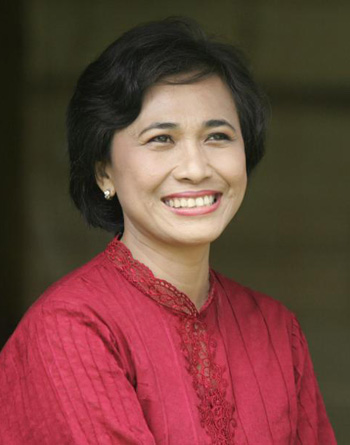Female candidates did better than expected in the 2009 general elections
Sarah Shair-Rosenfield
 |
Hetifah Sjaifudian represents Golkar in Indonesia’s lower houseSarah Shair-Rosenfield |
As Indonesia’s democracy moves into its second decade, institutional changes at each stage of electoral development have altered women’s roles in party politics and national legislative representation. Despite a hard-fought battle to require inclusion into the candidacy system through a set of clauses in the electoral and political party laws, women’s groups felt that the Constitutional Court ruling that opened up the nomination lists to voter choice meant that the 2009 national legislative elections were a backwards step.
According to many female candidates and activists, the formal gender quota and placement mandate on ballots were undermined by the introduction of an open-list system that allowed voters to choose ‘around’ the women that the parties had been required to place in winnable positions. But the effect of offering voters the ability to choose their representatives more directly was actually not all bad. Indonesian voters not only continued to vote for women, they voted for them more – resulting in a seven percent increase in the number of national female legislators between 2004 and 2009. Although women are not yet fully included and respected in all aspects of Indonesian political life, they appear to be on the right path.
Making space for women
Gender quotas and placement mandates are two of the most common institutional mechanisms used to











